Are you ready to learn how to monetize a blog?
Whether you’ve been blogging for years or you’re just getting started, there is no better time to start making money from your work.
In the early days of blogging, monetizing a blog was an ordeal that required complex solutions.
Now, however, it’s easy to start making money online with your blog.
The barrier to entry is low for those, and while you start making money, you can get ready for higher-paying solutions.
Contents
What Is Blog Monetization
The first thing to understand before learning how to monetize a blog is exactly what blog monetization is.
In short, blog monetization means that you make money from your blog.
When you create blog content and articles, you can monetize this content strategy using a number of different tools and methods.
In this article, we’re going to give a comprehensive overview of specific ways to monetize your blog’s content.
What Kinds of Blogs Make Money?
Nearly any type of blog can make money.
In most cases, when someone creates a blog, they are passionate about their chosen topic.
However, lots of successful entrepreneurs have started niche blogs that are making them money with content marketing even though they don’t have a personal interest in the topic.
Primarily, there are 10 types of blogs that make money.
- Blogs with display ads
- Affiliate product marketing blogs
- Blogs offering consulting
- Ebook sellers
- Blogs selling courses
- Digital product sales blogs
- Physical product sales blogs
- Membership sites
- Blogs offering services
- Sponsored content blogs
Each type has their own unique advantage, so familiarize yourself with all of them before choosing one.
Profitable Niches
While you can create a blog about any topic imaginable, there are some niches that reliably bring in good money for their creators.
Here are some of the more profitable niches.
- Personal finance
- Food
- Lifestyle
- Parenting
- DIY and crafts
- Home improvement
- Health and fitness
- Business and blogging
- Travel and outdoors
- Hobbies
- Learning and education
Before you pick a niche, make sure that you like the niche, you understand the niche, and you have a clear path forward with how you’ll make money.
[box_with_button title=”Recommended Reading” link_url=”https://bloggingtips.com/niche-website/” link_text=”What is a niche website?”]
Picking a niche is vital to making money as a blogger. But what are they and how do they work?
Learn more by reading our comprehensive guide.
[/box_with_button]
How Much Can You Make by Monetizing a Blog?
The amount of money bloggers make varies widely, but your blogging income is dependent on two things.
- Blog traffic
- How you monetize your blog
To give you an idea of how much money bloggers can make, we’ve pulled information from official studies and reports conducted by these sources:
ConvertKit’s State of Blogging report from 2017 reported that pro bloggers make an average profit of about $138,000, while amateur bloggers made about $9,000.
Digital Nomad Wannabe (DNW) set up a Facebook group for their survey.
They received more than 600 responses, and 100% of the respondents said that it’s possible to make money blogging.
According to DNW’s survey, 27% of bloggers make no money.
This figure is actually encouraging because it means that 73% of people who blog do make money.
The answers to the DNW survey show that 14.5% of bloggers make $5,000 or more per month and 1.9% make in excess of $20,000 per month.
Blogging.org reported revealed that 8% of bloggers make sufficient money to support their families.
Problogger’s report mirrors the results of the other surveys fairly closely.
Their survey indicated that 4% of bloggers make more than $10,000 per month, and 9% earn between $1,000 and $9,000 per month.
Case Studies: Blogger Income Reports
In this list, you can see how much some of the big bloggers make per year.
- Huffington Post: $500 million
- Moz: $44.9 million
- Engadget: $47.5 million
- Copyblogger: $33.1 million
- PerezHilton: $41.3 million
- TechCrunch: $22.5 million
- Mashable: $30 million
OK, those are the big guys, but what about the regular folks who just started a blog because they wanted a creative outlet?
The smaller blogs that put in the work are also making good money.
Here are some income figures for some of the most popular smaller blogs.
- Pinch of Yum (food blog): $60,000+ per month
- Making Sense of Cents (living frugal blog): $100,000 per month
- Treasure Gnome (Shopify, Amazon, and eBay sales blog): $9,750 per month
- While She Naps (sewing blog): $3,152 per month
- Just a Girl and Her Blog (lifestyle blog): $41,700 per month
What do all of these surveys, income reports, and studies reveal?
They show that it’s indeed possible to make money blogging if you do your homework, choose a profitable niche, have a solid marketing plan in place, and learn how to successfully monetize your blog.
We’ve compiled a list of 100+ blog income reports that you can read for an even better idea of blog income broken out by niche.
Blog Monetization Requirements: When Should You Monetize a Blog?
When should you start monetizing your blog?
The short answer is to monetize your blog as soon as you can.
Most advertising networks and affiliate programs don’t have a specific number for how large your audience should be (or how much traffic you get) before you can use their services.
However, there are some guidelines that can ensure that you have a good chance of being accepted to their programs.
The quickest way to start monetizing your blog is to apply for Google Adsense and the Amazon Affiliate Program because both of these have a fairly low barrier to entry.
- Initial Google Adsense approval: You need at least 30 articles on your blog, but we have seen people get approved with fewer articles than this.
- Website approval if you already have an existing Google Adsense account: You need 7-10 articles on a new blog before submitting the site to Google Adsense for approval. The content must be unique and pass Copyscape or Google will require you to correct the issue and re-apply.
- Amazon Affiliate Program: You need to have an active blog, website, YouTube channel, or app. It helps if you already have some content on your site so that your blog appears to be authentic and active.
You can start applying for other advertising networks and affiliate programs when you have one or both of the following things in place.
- Steady traffic (Some networks have minimum thresholds that must be met.)
- A sizeable and growing email list
Once you have those two in place, don’t hesitate to start.
13+ Ways: How to Monetize a Blog In 2022
Are you ready to learn how to monetize a blog and start making some cash?
Let’s dive into all of the excellent ways to make money from blogging.

1. Freelancing
My Work from Home Money conducted a survey and asked their readers this question: “Is there a ‘best’ blogging income source?”
Respondents reported that 70% of their income comes from freelancing, even though affiliate marketing is the most commonly used revenue source.
One easy way to make money from your own WordPress blog is offering freelance writing for blogs in your niche that are more prominent.

What is Freelancing?
A freelancer is self-employed and does not have an employment contract with the business they’re doing work for.
Sometimes, you will see freelancers called independent contractors.
People who work via freelancing usually enjoy the control and flexibility they have.
A freelancer can choose the hours they want to work, the clients they perform work for, the rates they want to charge, and the type of work they accept.
Another huge benefit of freelancing is that you can often work remotely.
How Does Freelancing Work?
Typically, companies hire freelancers either individually or through an agency for short-term projects or on a part-time basis.
In some cases, a client will hire a freelancer for a special one-time project, and in other cases, the client may have ongoing work for their freelancer.
Freelancing offers a lot of freedom not just to the worker, but also to the client.
For example, if a freelancer doesn’t meet the client’s needs, they can opt to not work with them again.
Also, there are no up-front costs such as training, office space, and equipment for clients who work with freelancers.
Freelancers typically have their own equipment and come to the job fully trained.
Some instances require a retainer, which is a payment arrangement for a specific number of hours every week (or month).
When freelancing, workers don’t receive the compensation and benefits that full-time employees receive.
Because they are considered contract workers, freelancers aren’t usually protected through programs such as unemployment insurance.
How Much Can You Make Freelancing?
A study conducted in 2019 said that freelancers make between $20 and $28 per hour.
Of course, this varies widely depending on several factors:
- The type of freelancing you do
- Your niche
- How much your clients pay
- How quickly you work
- The tools you use to help you work more efficiently (Grammarly, Hemingway Writer, Google Docs/Sheets, etc…)
Bloggers in specialty or highly technical niches tend to make better money.
The Editorial Freelance Association cites these figures as approximations of how much you can make writing in various niches.
- Trade/Technical: $50-$60 per hour
- Proposal and Grant Writing: $50-$60 per hour
- Fiction and Ghostwriting: $40-$50 per hour
To break this down by job type or project, here are some numbers provided by WriteWorldwide.
- Blog posts: $50-$350
- Long-form blog posts: $250-$1,000
- Web pages: $100-$500
- Press releases: $100-$1,000
- White papers: $2,000-$5,000
- Product Descriptions: $50-$150
- Ebooks: $2,000-$5,000
One thing to keep in mind is this: When you trade your time for money as a blogger, it’s difficult to scale your business.
For your freelance business to grow, you will need to build a team of people to work with you.
How Easy Is it to Start Freelancing?
The great thing about freelancing is that you can start earning money from day one.
The only thing you technically need to get started as a freelance writer is a computer and internet access.
You don’t even have to build a blog to get started as a freelance writer.
However, when you have a blog, you can put a services page on your site, as well as writing samples.
To quick-start your freelance writing career, one option is to sign up with writer directories or content agencies, which are sometimes called content mills.
The pay is usually much less when you work through agencies because the agency gets a portion of your earnings as a referral commission.
However, many protections are built into writing for agencies.
- When you write for an agency, you don’t have to worry about chasing payment from a client.
- You also don’t have to hustle to find your own writing jobs because clients contract through the agency.
However, the best paying writing gigs come from private clients.
To find private clients, keep your eye on the blogger job boards and marketplaces such as Upwork, LinkedIn, and Flexjobs.
Why is Freelancing a Great Monetization Method?
When you have an existing blog, you have a money-making machine that can show prospective clients in your niche exactly what type of great content you can provide for them.
You don’t even have to have a ton of traffic flowing to your blog.
Your goal is to demonstrate that you can write knowledgeably in a niche.
Another benefit of having your own blog as a freelancer is that you can market your services.
If you’re a writer, editor, or designer, what better way to showcase your work than through a blog?
Be sure to put a services page on your blog that outlines what you charge for writing.
Blogs can also bring in money through interesting routes.
For example, a food blogger can hone their skills as a food photographer and get photography gigs from area restaurants.
Along that vein, someone who makes great videos for their own blog can sell their video editing services to other bloggers.
2. Sell Digital Products
We will cover physical products you can sell below, but first, let’s talk about digital products.

What are Digital Products?
Digital products are products that are not tangible.
These products are delivered through technology and/or software.
In most cases, they are downloaded by the purchaser to their computer or another electronic device.
Types of Digital Products
Here are some examples of items that are digital products.
- Ebooks
- Online courses
- Webinars (live and recorded)
- Printables
- Audiobooks
- Music downloads
- Audio recordings
- Art downloads
- White papers
How Much Can You Make Selling Digital Products?
Once you have your digital product for sale on your website, your potential for profit is virtually unlimited.
How Easy is it to Start Selling Digital Products?
Most of the work behind creating and selling a digital product is on the front end.
You have to have something to sell, and that usually involves a creative process and some work.
However, once you have your digital product, all you need to do is upload it to your website once, then create the payment method.
This may require some coding, but it’s doable if you’re a tech-savvy person who built a website.
If you want to make it even easier, you can create an Etsy store and upload your digital products there.
Etsy has excellent and easy-to-use tools for selling digital products.
Then, just put a link to your Etsy store on your blog.
You can also create a Shopify store and do the same thing.
Why is Selling Digital Products a Great Monetization Method?
With digital products, you typically have a lower overhead cost.
In most cases, the main cost is the time it took you to create the digital product.
Here are some more excellent reasons to sell digital products on your blog.
- High-profit margins because you reap most (or all) of the profits of the sale
- Automation potential so that you don’t have to be physically involved with the process
- Flexibility
- Passive income once it’s all set up
3. Sell Physical Products
When you have a dedicated blog audience, you have a great opportunity when it comes to selling physical products.

What Are Physical Products?
Physical products are hard goods and tangible items that include physical goods, apparel, and merchandise that you can sell to members of your audience.
Types of Physical Products
There are countless types of physical products you can sell to your blog audience.
Some examples of physical products you can sell include:
- T-shirts
- Stickers
- Books
- Artwork
- Posters
- Hats and caps
- Mugs
- Greeting cards
- Something related to your niche
How Much Can You Make Selling Physical Products?
There is no limit to the amount of money you can make selling physical products.
Keep in mind that Amazon started as an online bookstore, and look where the company is now.
Eric Bandholz of Beardbrand got his start as a beard blogger.
Then, he created a line of beard grooming products, and he now makes more than $100,000 per month.
How much you make selling physical products depends largely on two things:
- The size of your audience
- How well you market your products
How Easy is it to Start Selling Physical Products?
To start selling physical products on a blog, you need a WordPress plugin such as Woocommerce.
Alternatively, you can create an e-commerce store on Shopify or a similar platform and then blog on your e-commerce store.
If you want to sell printed items such as t-shirts and mugs, you can use a print-on-demand service such as Printful to get started with zero inventory.
The way this works is that you upload your design to Printful, and the company prints it “on-demand” and ships it to your customers.
You never have to see a physical product.
You can also use Printful to start an Etsy store and sell to people who follow your niche.
Etsy serves as a search engine, so you can start selling right away without having to spend a dime on advertising.
Why is Selling Physical Products a Great Monetization Method?
If you already have an audience, it makes sense to sell physical products to them.
After all, they’re reading your blog because they like what you have to say, so there’s a good chance they will also appreciate the products you offer.
With physical products, you don’t just have another revenue stream.
You can completely surpass your blog revenue with product sales, as evidenced by Eric Bandholz’s journey.
[box_with_button title=”Recommended Reading” link_url=”https://bloggingtips.com/product-pricing/” link_text=”Perfect Product Pricing”]
Your product pricing can make or break your income earned through the physical products you sell.
We have some tips to get that part right, the first time.
[/box_with_button]
4. Selling Services
If you have a blog, you have lots of skills.
For one thing, you’re probably an excellent writer and editor.
If you built your own site, you also have some tech skills.
However, you also have the expertise in your niche.

What are Services?
Services are intangible items that are provided for one person or company by an individual.
Types of Services You Can Sell
In terms of blogging, there are situations where people or brands may want more of your expertise than you have in your blog, course, or book.
Coaching
If you have conquered obstacles and can teach others how to do the same, you may be able to sell your services as a coach.
When you coach someone else, you are using your experience and skills to help your client solve various problems that they’re trying to overcome.
In some cases, you may already be monetizing your expertise with books, podcasts, and blog posts.
Why not package up those skills and sell them as a service.
Consulting
Consulting is different from coaching because it’s usually a service that is bought by a business.
Many companies don’t want to hire someone full-time for specialized work. Instead, they like to work with a consultant for specific projects.
How Much Can You Make Selling Services?
It depends on what type of service you’re providing and which industry your niche is in.
Nagina Abdullah earns more than $100,000 per year coaching clients who are struggling with weight loss.
How Easy is it to Start Selling Services?
You can use the free plugin Easy Digital Downloads as Services to sell services instead of downloads.
Why is Selling Services a Great Monetization Method?
When you can bring your expertise to a service opportunity, you’ve really reached the next level.
Selling your services is yet another way to monetize your blog.
You can even create a services page on your blog.
[box_with_button title=”Recommended Reading” link_url=”https://bloggingtips.com/service-based-business/” link_text=”6 Tips to Consider When Building a Service-Based Blog Business”]
If your aim is to get clients to your services business through your blog, it is very important to consider the 6 most important tips that we’ve outlined for successful service business promotion.
[/box_with_button]
5. Ad Networks
When you’re ready to learn how to monetize a blog, one of the first things you will need to do is choose an ad network.
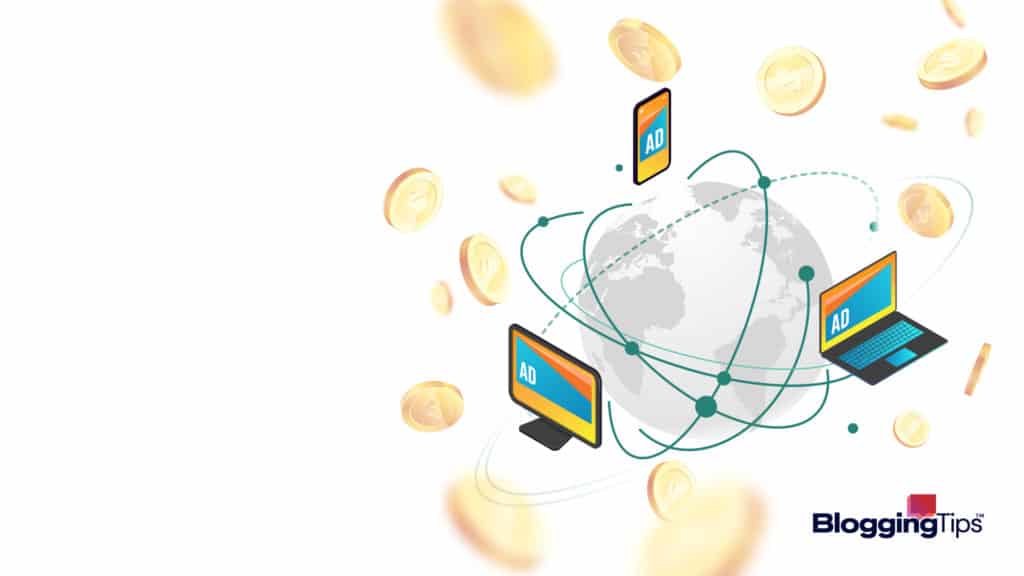
What are Ad Networks?
An advertising network connects website and blog owners with businesses or organizations that want to run ads on their sites.
In layman’s terms, ad space is gathered and matched with the needs of an advertiser.
The space on a blog that is available for advertising is called ad inventory.
How Do Ad Networks Work?
Ads are delivered through a central hub that allows publishers to use a variety of different targeting methods.
With ad networks, there are tools for reporting and tracking that aren’t usually available with single advertisers.
A publisher can make more money by selling their ad inventory themselves, but with an ad network, publishers can typically enjoy a 100% fill rate.
The fill rate is the amount of time ad inventory is used.
With ad networks, advertisers can use advanced targeting tools that allow them to target potential consumer groups using specified parameters. Targeting capabilities can include any of these:
- Gender
- Age
- Geography
- Income
- Behavior (Relevant ads can display to users based on ads and content they’ve clicked on when visiting other websites.)
Types of Ad Networks
An ad exchange serves as the marketplace between publishers and advertisers.
Meanwhile, an ad network buys ad impressions in bulk, then the network makes them available to the advertisers for purchase.
1. Marketplaces
Ad exchanges are marketplaces that allow automated selling and buying of advertising media.
An ad marketplace is a part of the ecosystem that is powered by RTB (real-time bidding) technology.
2. Managed Ad Network
In a managed ad network, account managers use their expertise to serve as a consultant and ensure that ad campaigns run optimally.
3. Self-Serve Ad Network
A self-serve ad network enables affiliate marketers, media buyers, website owners, and app developers to reach their marketing goals by maximizing their presence.
How Much Can You Make Using an Ad Network?
Revenue from ad networks is calculated based on the amount you earn per 1,000 page views (RPM).
You need to know these two things to calculate how much you can potentially make using an ad network.
- The average RPM your ads make
- Your site traffic
Many blog owners report an average RPM of $20, but this number is fluid and dependent on several different issues.
These averages can give you a good starting place to calculate your potential revenue.
- Low end: $2-$5 per 1,000 views
- Medium end: $5-$10 per 1,000 views
- High end: Up to $50 per 1,000 views
How Easy is it to Integrate Display Advertising Into a Blog?
Integrating display advertising into a blog is surprisingly easy, and there are a few ways you can do it.
When you work with the larger ad networks, they will provide you with a WordPress plugin that you can use to easily insert ads into your ad inventory.
Alternatively, you can manually place the ad code snippets into the places where you would like for them to appear on your blog.
Best Ad Networks to Try
There are several different ad networks for publishers to choose from, but we want to highlight the top four: Google Adsense, Adthrive, Mediavine, and Ezoic.
1. Google Adsense
Most publishers get their monetization started with Google Adsense.
The barrier to entry is small because Adsense doesn’t have a minimum traffic requirement.
The downside is that Adsense pays less than most other ad networks, and the big earners usually ditch it when they can go to Adsense alternatives that pay much better.
Another negative is that Google Adsense doesn’t provide customer support, and troubleshooting can be frustrating.
On a positive note, Google pays out about 21-24 days after the end of the month.
Also, the minimum payment threshold is only $100.
Some publishers may have trouble getting approved for Adsense. In this case, there are some Adsense alternatives to try.
2. Adthrive
As one of the largest and most popular advertising networks, Adthrive is hugely popular with large publishers.
Adthrive delivers high-quality ads and optimized ad placements, so you can earn more money.
Even better, Adthrive will show the ads that pay the highest.
Adthrive pays NET 45, which is standard for the ad industry.
To be approved by Adthrive, you must have at least 100,000 monthly page views.
3. Mediavine
To join Mediavine, you need to have at least 50,000 monthly page views, but once you’ve been approved, you can start earning really good money.
Mediavine delivers high-quality ads, and the company is well-known for excellent customer service.
Publishers who love Mediavine say that the company has the cleanest reporting dashboard and it’s user-friendly.
For payment, you have to wait 65 days for a payout from Mediavine.
4. Ezoic
If you’re a smaller publisher, we recommend that you check out Ezoic.
To get approved with this ad network, you used to need 10,000 monthly page views.
However, they have recently changed that requirement to no minimums, so this is a win for small publishers who have good content but are just getting started.
Earnings with Ezoic aren’t as high as with Adthrive or Mediavine, but the money is better than you earn with Adsense.
Ezoic pays NET 30.
Why are Ad Networks a Great Monetization Method?
There are pros and cons to monetizing with ad networks, but most publishers agree that it’s the best way to ensure that your ad inventory is always being utilized.
Moreover, some ad networks pay nearly as much as a publisher would earn if they sold their ad inventory themselves to individual advertisers.
The primary benefit of working with an ad network is that most can guarantee a fill rate at or close to 100%.
6. Affiliate Marketing
In the My Work from Home Money survey, the authors asked this question: “How do bloggers make money?”
Responses indicated that 70% of bloggers say that affiliate marketing is the most popular and most commonly used source of monetization.
Many new bloggers recognize affiliate marketing and associate it with the Amazon Affiliate Program.
While Amazon is a great start, there are tons of other opportunities for earning affiliate revenue.
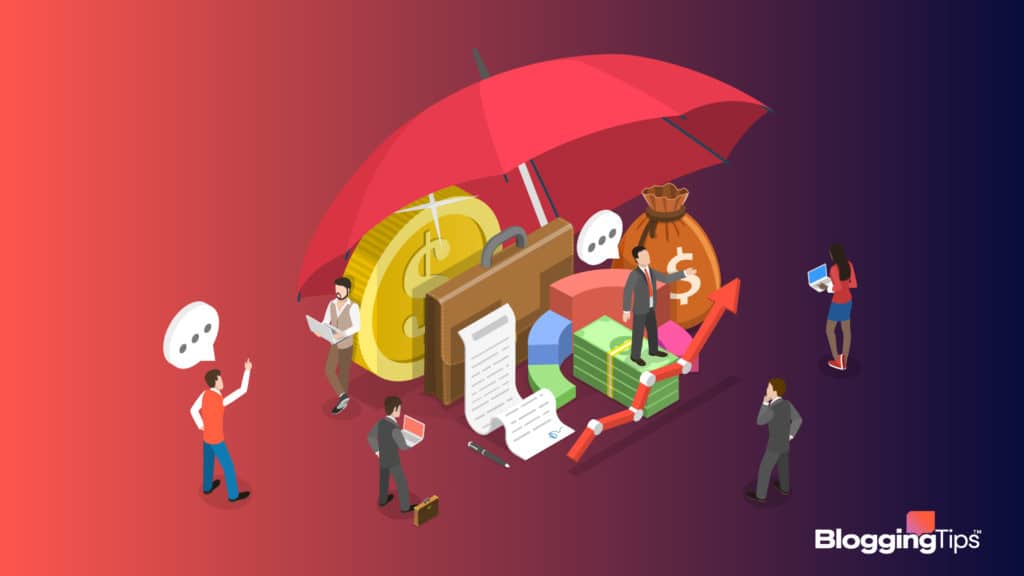
What is Affiliate Marketing?
In affiliate marketing, publishers earn commissions when they promote a service or product that’s made by another advertiser or retailer.
If a sale is made, the affiliate (the publisher) receives a portion of the sale as a commission.
Affiliate marketing is sometimes referred to as referral marketing.
How Does Affiliate Marketing Work?
When you use affiliate marketing, you are essentially a salesperson.
The affiliate program provider will give you a unique tracking code or ID, and when one of your blog visitors clicks the link, you are credited with the sale if the customer makes a purchase.
In some cases, affiliate marketing isn’t a sale.
It could be an app download, a lead, or even a free-trial user.
Usually, affiliate programs are free for publishers to join, so you don’t have to worry about startup costs.
Types of Affiliate Marketing
There are three primary types of affiliate marketing: unattached, related, and involved.
1. Unattached
If you are “unattached,” it means you don’t have authority in the niche of whatever product or service you’re advertising, and there is not a connection between the customer and you.
An example of this would be a food blogger running an Amazon Affiliate ad for computers.
Publishers tend to like unattached affiliate marketing because no legwork is required.
Instead, the businesses rely on trust and the reputation of a target audience.
2. Related
With related affiliate marketing, bloggers promote services and products that they don’t necessarily use but that are in their niche.
With our food blogger example, this would be a blogger having an affiliate ad for a cookbook on their site.
Because the blogger has influence in the blogosphere and community, their opinion is trusted.
When using related affiliate marketing, it’s important to use transparency to indicate that you’ve not used a product.
Otherwise, you can lose the trust of your audience.
3. Involved
Involved affiliate marketing is when you only recommend services or products you use yourself.
This type of affiliate marketing is the best one to use because it builds trust with your audience.
With involved affiliate marketing, a food blogger would only mention products, services, or ingredients that they use.
How Much Can You Make Promoting Affiliate Products?
Affiliate marketers make money primarily in four different ways.
- Pay per sale: Merchant pays affiliates a percentage of the product’s sale price
- Pay per lead: Affiliate is compensated based on lead conversions
- Pay per click: Affiliate is incentivized to direct customers to the merchant’s website
- Pay per install: Merchant pays affiliates when a user installs a product (usually software or a mobile app)
Naturally, how much you make as an affiliate is dependent on how large your audience is and how many customers you send to the clients.
An Affiliate Marketing Benchmark Report produced by Influencer Marketing Hub in 2022 revealed that 3.78% of affiliates make more than $150,000 per year.
Conversely, 57.55% of respondents make below $10,000 per year.
How Easy is it to Start Promoting Affiliate Products?
Affiliate marketing is super easy to execute.
Because a publisher is essentially the salesperson, you aren’t involved with the development, customer support, or fulfillment of the products or services.
Here are the three things you need to get started with affiliate marketing.
- A niche
- Products to promote
- A relevant audience (this can be your blog readers or social media following)
Once your blog is set up, you fill some of your ad inventory with product media and link out to the customer’s sale page with your unique tracking code.
Best Affiliate Marketing Networks to Try
There are tons of affiliate marketing networks and programs in existence, but five of the most popular are Amazon Associates, Rakuten, ClickBank, JVZoo, and Impact.
1. Amazon Associates
As the world’s largest leading online marketplace, Amazon sells nearly everything under the sun.
For this reason, it’s no surprise that the Amazon Associates program is popular with bloggers.
Whatever your niche, you can find products on Amazon that will resonate with your audience.
Depending on the product, Amazon’s commission rates are between 1% and 20%.
The best thing about the Amazon affiliate program is that your readers don’t have to buy the product you link to.
Amazon stores a cookie on its users, and anything the reader buys in the next 24 hours will be credited to you as the referrer.
Amazon pays every month, but the payment is NET 60.
You can opt for payment via mailed check, direct deposit, or (of course) an Amazon gift card.
2. Rakuten
As a cashback website, Rakuten Advertising gives money to consumers when they make purchases through the company’s website.
A popular site for shopping, Rakuten reported revenue for Quarter 2 of 2021 as $3.4 billion and the company continues its meteoric growth.
The company’s affiliate program is connected to more than 2,500 different retailers selling all types of products. With Rakuten, you can earn commissions in three types of ways:
- Dynamic commissioning: Great for scaled revenue
- Coupon commissioning: Coupon codes
- Multi-touch commissioning: Affiliate gets credit at all stages of the customer’s journey
3. ClickBank
One of the most well-known affiliate programs is ClickBank, which is a leading global retailer.
ClickBank operates in more than 200 countries and has been around for a long time.
To date, ClickBank has paid out more than $4.2 billion in affiliate commissions.
In addition to physical products, ClickBank also has lots of digital products that you can promote.
4. JVZoo
If you want to promote digital products, JVZoo is the way to go.
Something to love about JVZoo is that your affiliate link connects to all of the products in a given funnel.
Equally impactful, the cookies are for life, so you have plenty of time to earn a commission from a referral.
The company is based in the U.S. and has been around since 2009.
With more than 18 million products and more than 800,000 affiliates, JVZoo is worth noting.
5. Impact
Founded in 2008, Impact was started by a team of marketing enthusiasts who also introduced the world to LeadPoint and Commission Junction.
Impact has some big names as clients, including Airbnb, Adidas, Lenovo, L’Oreal, Allstate, Levi’s, and more.
The company boasts robust reporting and cross-platform tracking, along with more than nine million products.
Here are some more popular affiliate networks and ideas.
Why is Affiliate Marketing a Great Monetization Method?
The affiliate marketing space is booming, and a study conducted by Statista estimates that by 2022, the affiliate marketing industry should be worth more than $8.2 billion.
In 2017, this figure was only $5.4 billion, so this industry is growing at a rapid pace.
Here are some more benefits of affiliate marketing:
- Easy to execute
- Easy to scale
- Low risk
- Passive income
Besides being able to make a lot of money with affiliate marketing, it’s also easy to get started monetizing with affiliate programs.
Most of them don’t require a minimum traffic amount, so it’s a great option for even small and new bloggers.
[box_with_button title=”Recommended Reading” link_url=”https://bloggingtips.com/highest-paying-affiliate-programs/” link_text=”Highest paying affiliate programs”]
Not all affiliate programs are created equal. Some pay well, others not so well.
The key is selecting the ones that pay the most within your industry.
[/box_with_button]
7. Create and Sell a Course
An excellent way to earn money from your blog is by selling an online course.
Maybe you don’t see yourself as an “expert” about anything, but that’s not true and you shouldn’t let that hold you back.
After all, you’ve probably spent thousands of hours in your niche, which is more than the average person starting out.
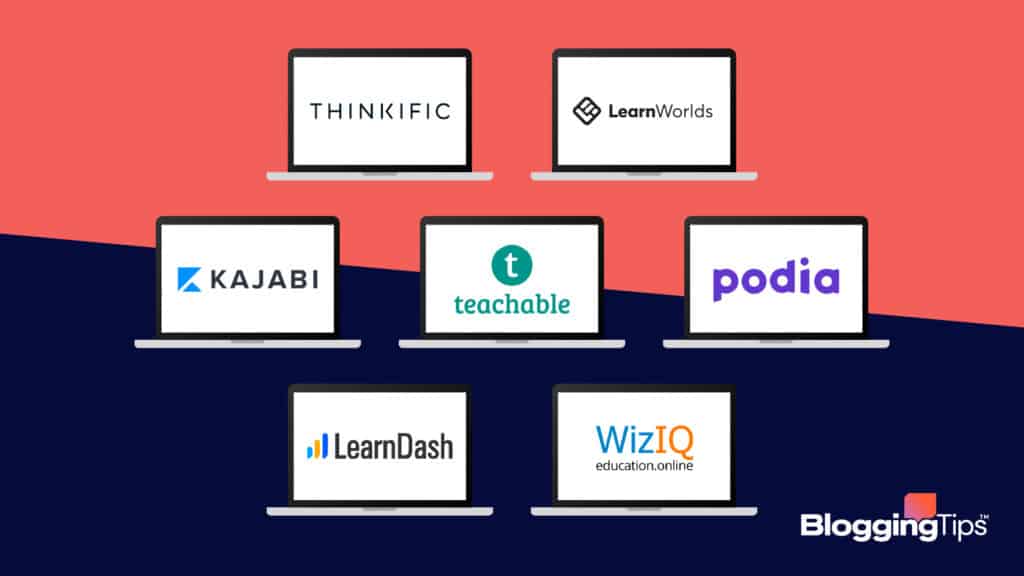
To earn money by teaching others, you just need to know more than the people who are paying you for your expertise and knowledge.
Did you know that you can become an “expert” on a topic in about two hours?
Now, this doesn’t mean that you can become a doctor or attorney in two hours, but for some topics, a few hours of internet research will make you more knowledgeable about a topic than most other people.
And if you want to genuinely master a new skill so that you have enough expertise to teach it well to others, you can do that in about six months, according to the Harvard Business Review.
To create an online course, you first need to develop expertise in your chosen topic.
To do that, follow these steps.
- Examine your readiness. Do you have the basics in place for learning a new skill?
- Ensure that the information you want to sell has an audience. To do this, you need to conduct some market research.
- Get busy. Get busy adding more knowledge to what you already know.
Why not turn this expert knowledge into an online course that you can sell?
What is an Online Course?
An online course, also called an e-course, is a course that is taught online rather than the traditional method of teaching in person.
Online courses are usually pre-recorded, but some courses offer life sessions online.
With an online course, learners can learn in their own preferred time and space, making them ideal for people who need flexibility.
How Does Selling an Online Course Work?
To sell an online course, you need to first come up with an idea for your course.
Do this by asking yourself some questions.
- What do I know more about than most people?
- Is there a topic that I can easily explain to someone who knows nothing about the topic?
- Can I make myself an expert in something that I already know a lot about?
- What skills or information have I learned from my career and past jobs?
- Does my existing audience have a problem I can help them solve?
- What do people ask me for advice on?
To find out what your audience would like to learn from you, do some of these things.
- Send surveys to your audience. To learn what your audience wants to learn, simply ask them. You can use a tool like Survey Monkey or just send an email to your subscriber list.
- Stay on top of your blog and social media comments.
- Use Google search, Google Trends, Answer Socrates, or Answer the Public to find out what people are asking questions about.
Once you know what you want to teach other people, it’s time to build your course.
Hosting Your Online Courses
To host your online course on your blog, you will need to use a WordPress LMS plugin.
Different plugins have various features, so be sure to thoroughly research each one that you’re considering.
Here are a few popular LMS plugins.
- LearnDash
- LearnPress (free with premium options)
- Tutor LMS (free with premium options)
- Lifter LMS
- MasterStudy LMS
- Good LMS
- Namaste! LMS (free with premium options)
- WP Courseware
Third-Party Online Course Platforms
Do you want to sell your course on an outside third-party platform that will help you grow your brand and drive awareness and traffic to your blog?
The best online course platforms listed below are great tools for helping you create and sell your online courses.
- Teachable
- Udemy
- Podia
- Mighty Networks
- Gumroad
- Kajabi (read our guide)
- Skillshare
- Creative Live
- Xperiencify
- Thinkific
- Pathwright
- MemberPress Courses
Note that these platforms will charge you a monthly fee or keep a percentage of your sales.
However, it’s worth it because it will help you grow your brand.
Types of Online Courses
There are eight main types of online courses.
- Mini-course: Short course your learners can finish in an hour or two
- Interactive online course: Keeps your audience engaged as they learn
- Self-paced online course (Massive Open Online Courses): Helps people learn a skill at their own pace with video, presentations, text, discussions, and animation
- Written online course: For people who like old-school learning
- Webinar: Interactive and accessible, can be recorded for learning outside of the live webinar
- Masterclass: Signature course developed by an expert
- Email course: For sending your subscribers course modules over a period of time (usually a week or a month)
- Boot camp: Comprehensive and immersive experience for learners
How Much Can You Make Selling Online Courses?
There is big money to be made in selling online courses.
According to Global Newswire, the e-learning industry will grow to approximately $325 billion by the year 2025.
The big earners such as Joseph Michael make six figures from their online courses.
Michael got his entrepreneurial start with a blog about learning life skills, and he spent six months (remember that Harvard Business Review article we linked to above?) learning how to create his first online course with a small budget.
How Easy is it to Create and Sell a Course?
Joseph Michael notes that he wrote his online course during his lunch breaks when he was still working in a corporate job.
Sometimes Michael would go to his office’s parking garage, while other times, he would go to a Starbucks parking lot to use their free wi-fi.
This shows just how easy it can be to create an online course if you educate yourself on how to do it correctly.
As for equipment, Michael created his first online course with a cheap USB microphone and a laptop.
Why is Selling a Course a Great Monetization Method?
If you’re blogging in a niche, you’ve probably become an expert in that niche and adjacent niches.
Here are three reasons selling an online course is a great blog monetization method.
- People who are enthused about your content will be more than happy to shell out cash to go in-depth with you to learn more.
- You’re already sharing your knowledge on your blog. However, with an online course, you can dive deeper into your topic and sell your expertise to your readers.
- You can even use your online courses to pivot into another revenue stream: selling your services with one-on-one coaching or consulting.
8. Memberships
When you have a membership website, you essentially have a recurring revenue model that brings in money every month (or year).
In recent years, countless blogs and brands have started offering a membership model.
For example, brands such as Adobe and Microsoft now offer monthly plans and people no longer have to pay the hundreds or thousands of dollars up-front to use their products.
You can bring this same mindset into your blog.
If you’re skeptical about this business model, just keep reading for more info about how you can rake in cash with a membership website.
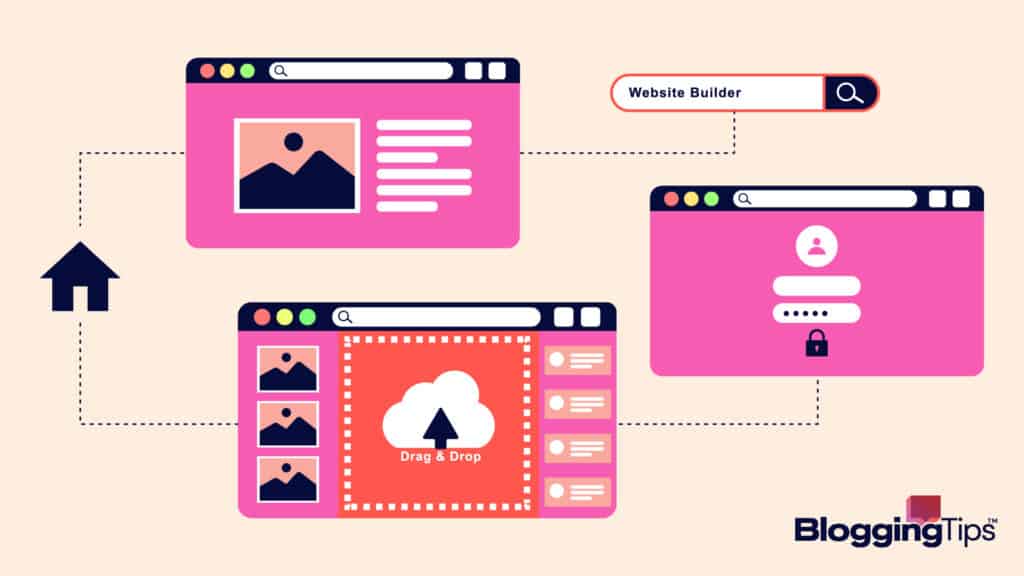
What are Membership Websites?
Membership websites are blogs or websites that contain information that lives behind a paywall.
Gated content uses a “gate” to limit access to your blog’s content to paying or registered members.
Once your members are inside your gated community, they have access to extra privileges and exclusive content.
How Does a Membership Model Work?
For a membership model to work for your blog, you need:
- The mindset that your customer experience is the most important thing
- Topical focus
- Solid planning to know what’s involved in managing a membership site
- The knowledge of how your topic can encourage growth or solve problems
- A genuine dedication to your niche or topic
- Energetic marketing
To create a membership site, you will need to use a WordPress plugin or third-party tool.
Types of Membership Sites
There are three primary types of membership sites: premium content, access to a blogger’s time, and community memberships.
1. Premium Content
If you have a blog about any topic, you can put your best exclusive content behind a paywall for your paying members.
One example is Food Blogger Pro.
Owned by the couple who runs the popular (and very profitable) Pinch of Yum food website, Food Blogger Pro offers an excellent free blog and podcast.
However, the company also offers a membership option for $350 per year.
Food Blogger Pro members enjoy access to online courses, a private community forum, support from experts in the food blogging niche, monthly live Q&A calls, discounts on recommended products and tools, and much more.
2. Access to Blogger’s Time
Some membership sites offer something even more valuable than excellent content: access to a blogger’s time.
This type of membership type is sometimes referred to as a coaching membership.
Like most of us, even the best of us have limited time to interact with followers.
And the big players experience even more of a demand on their time.
If you’re someone who has a lot to offer in terms of knowledge, having a membership site where you interact with your followers may be a great fit for you.
3. Community Memberships
Many membership sites focus on the community aspect of their site.
Building a membership site around your existing fanbase is the perfect way for them to interact not just with you but also with each other.
In many cases, subscribers will sign up to receive your content, but they will stay because they enjoy the community.
Here are some excellent and creative ideas for membership sites that you can add to your existing blog.
- Content libraries
- Image collections (stock videos, photos, or illustrations)
- Website templates or WordPress themes
- Cooking membership sites with free access to ebooks or webinars
- Job boards and other classifieds
- Serial content or fiction
- Online courses
- Meal plans
- Services
- DIY crafting project plans
- Workout videos
How Much Can You Make With Membership Sites?
With membership sites, the sky is the limit in terms of how much money you can make.
You can collect membership fees in any of the following ways.
- One-time fixed rate
- Lifetime membership
- Freemium
- Recurring fixed rate
- Custom rate
- Installment plans
- Tiered pricing
- Pay what you want
- Pay as you go
Which payment plan is best for you? It depends on what you offer.
If you have a blog and regularly produce new content, the recurring fixed rate is best for you.
If you offer extensive content such as online courses and ebooks, it may be profitable to have a tiered pricing plan.
Here are a few examples of membership sites that make their owners plenty of cash.
- Smart Blogger
- Jane Spiller Astrology
- Travel Club 360
- Orchids Made Easy
- BBC Muzzy
- Magnetic Memory Method
- Youpreneur
- Copyblogger
- Lady Boss Weight Loss
- Freelance Writers Den
How Easy is it to Create and Promote a Membership Site?
A quick Google search will net you tons of results on how to build a membership website and how much money the big players make from their sites.
However, it’s important for you to know precisely how a membership website will work for your needs and your content.
Here are some of the most popular tools and plugins to help you build your membership site.
- MemberPress (starting at $179 per year)
- WPQuickStart (starting at $40.83 per month)
- BBPress (free)
- BuddyPress (free)
- Learndash (starting at $159)
- Ultimate Membership Pro ($59)
If you want to take your blog off WordPress and build on another membership or community platform, there are several different options.
- Mighty Networks
- Disciple
- Tribe
- BuddyBoss
- Discourse
- Wild Apricot
- Khoros
- Podia
- Unseen (for video content)
- Kajabi
You can read a full breakdown of each platform and tool in our Membership Portals and Community Platforms guides.
Promoting Your Membership Site
When you have a membership site, the “build it and they will come” mantra will only take you so far.
To grow your membership, you need to promote your community.
- Participate in forums in your niche.
- Join relevant Facebook groups and make yourself a valued member of the group. Don’t just spam your membership site. That can quickly get you kicked out of the group.
- Blog on LinkedIn or Quora to establish yourself as an authority in your niche.
- Put a banner in a prominent spot on your blog encouraging blog readers to join.
- Add reminders to your email newsletters (don’t be pushy).
- Ask your members to invite new members.
- Create a promo video.
- Collect testimonials from members who have found your membership site to be valuable.
Why is Building a Membership Site a Great Monetization Method?
Anytime you can reap revenue from the same customer over and over again, it’s a win for both of you.
While you may occasionally have a repeat “customer” when fans read your blog, making them love your content enough to pay for exclusive access is much more profitable.
Here are some of the advantages of having a membership site.
- You’re building a community of devoted followers.
- Recurring revenue is a stable addition to your revenue stream.
- You continue to establish authority in your niche.
- Even if other advertising methods experience a seasonal drop, your membership site will keep bringing in the cash.
9. Display Advertising
Display advertising sometimes takes a beating in the blogosphere, with critics claiming that you can’t make money with it.
In some cases, the critics may be correct.
Nevertheless, there is still money to be made with display ads, and the fact that they are still around is proof of that.
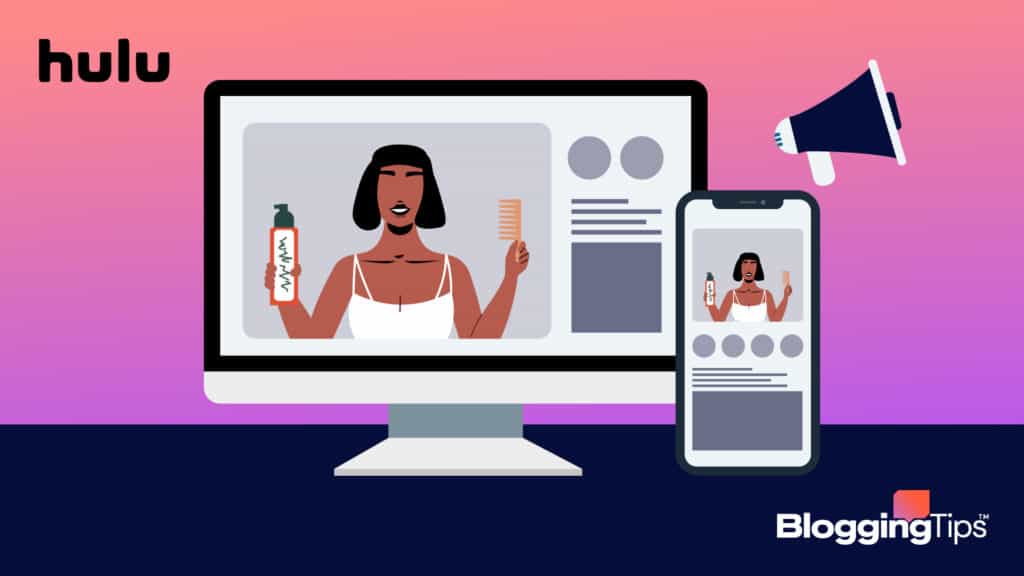
What Is Display Advertising?
Display advertising consists of image or video ads that people view when they browse blogs, social media, apps, and even connected TV devices.
With the rise of streaming, there are even Hulu advertising and Spotify ad options available.
In short, any digital ad format in addition to audio-only ads and paid search ads can be referred to as display advertising.
How Does Display Advertising Work?
Display advertising promotes brand awareness, promotional sales, specific products, content, apps, or services across a website visitor’s entire journey.
These ads can be animated, static, or video-based.
In many cases, display ads are associated with top-of-funnel marketing, the marketing that first makes a website visitor aware of your brand.
Types of Display Advertisements
There are several different types of display ads.
The four most common are banner ads, sidebar ads, in-content ads, and newsletter ads.
Display ads have four components:
- Headline
- Copy
- Media (video or image)
- Call-to-action button
1. Banner Ads
For decades, we have been seeing banner ads across the top (and sometimes the bottom) of our favorite websites.
It’s also common to see banner ads in videos and in apps.
2. Sidebar Ads
A sidebar ad looks similar to a banner ad except that it’s vertical instead of horizontal.
Sidebar ads can be either short or long.
When the ad is tall, you will sometimes see it referred to as a skyscraper ad.
Some ad networks call the sidebar on a blog the “right rail.”
3. In-Content Ads
In-content ads are as straightforward as the term sounds.
These ads are nestled inside the content.
In some cases, this can be a regular display ad or native advertising.
4. Newsletter Ads
You can place a display ad code snippet inside your newsletter for newsletter ads.
Other types of display advertising include:
- Responsive display ads
- Native advertising (ads that resemble a publication’s content)
- Video display ads
- Dynamic display ads
- Interstitial ads
- Overlay ads
- Lightbox ads
- Companion ads
- Rewarded ads
How Much Can You Make With Display Advertising?
How much money you make with display advertising depends on the revenue per 1,000 page views (RPM).
To calculate how much money you can make from display advertising, you need to know two things:
- Your average RPM
- How many site visitors you regularly have
The challenging thing is that RPM can vary from day to day, and even minute to minute.
A few other things can affect your RPM.
- The type of website or blog you have
- How many ads you are displaying on your blog
- Which ad network you’re using
- Your content length
- Seasonal changes
Some blog owners report an average RPM of $20, and this rate can vary depending on the time of year.
Here are some basic RPM numbers you can play with to figure out how much money you can make with display advertising on your blog.
- Low end: $2-$5 per 1,000 views (we have seen even lower RPM than this)
- Medium end: $5-$10 per 1,000 views
- High end: Up to $50 per 1,000 views
How Easy is it to Set Up Display Advertising On a Blog?
Setting up display ads on your blog is one of the easiest ways to get started making money.
For most display advertising, your ad partner will give you a snippet of code to insert on your website.
Why is Display Advertising a Great Monetization Method?
One of the reasons display advertising is so effective is that they’re one of the fastest ways to begin monetizing your blog.
When it comes to the traditional funnel approach, display ads are at the top of the funnel.
In many instances, a display ad is the first thing prospective customers will see to make them aware of a brand.
However, display advertising can pay off at all stages of the marketing funnel, including:
- Awareness
- Engagement
- Consideration
- Conversion
- Advocacy
At every stage of the funnel, display advertising can play a pivotal role and make your blog lots of money.
Display advertising is a great place to start until you can monetize with higher-paying advertising options.
10. Sponsored Posts and Reviews
You’re already writing content you love for your own blog, but did you know that you can make money by creating a sponsored post or product review?

What are Sponsored Posts and Reviews?
A sponsored post or review is website content that is actually a type of native advertising.
A sponsored post blends in naturally with your existing content.
However, in the sponsored post or review, you are writing about someone else’s product or service.
Usually, a sponsored post will be labeled as such, but sometimes these posts are called promoted posts.
How Do Sponsored Posts and Reviews Work?
Typically, native advertising is found by shopping online or doing a Google search.
Have you noticed that the ads at the top of Google searches increasingly look similar to the search engine results?
This is native advertising.
In the above situations, the ads are usually relative to the searcher’s experience.
With sponsored posts on a blog, it’s very similar.
Your readers may not even be aware that they’re reading a sponsored post or review if you didn’t tell them.
However, the law requires that you disclose the information if a post or review is sponsored.
The way it works is that a company or individual pays you, the blogger, to write a blog post or review about their product.
In most cases, you need to have a sizeable amount of traffic to be able to attract clients for sponsored posts.
Pro Tip: Check out these affiliate disclosure examples to understand the type of disclosure to put on your site.
Types of Sponsored Posts and Reviews
You can get really creative when offering sponsored posts and reviews.
In addition to blogging, you can run social media promotions, send offers in your email newsletters,
1. Blog Posts or Reviews
If you have a blog, you can blog about products you use and enjoy.
For example, if you’re a food blogger, a brand may offer you free food or equipment to try and review honestly.
While sometimes payment may come in the form of goods, popular bloggers also get money for giving an honest review of a product or service.
2. Social Media Promotions
Do you have a large social media following?
You can leverage your network to show yourself using a sponsored product.
3. Sponsored Content and Guest Posts
An example of sponsored content would be a brand writing something for your blog.
Their content should blend seamlessly with your own content, and their content should be clearly labeled as a sponsored post.
Alternatively, you may have the opportunity at some point to write a guest post for someone else’s blog.
4. Email Newsletters
Have you ever gotten an email from someone you subscribe to and they’re acting on behalf of a third party?
In most cases, this is a sponsored email newsletter.
For example, if you follow your favorite food blogger, it may not be unusual for them to send an occasional email with holiday ideas using a specific product.
How Much Can You Make With Sponsored Posts and Reviews?
Bloggers and influencers who make money from sponsored posts are cashing in big-time.
If you’re just getting started with your blog, you may not be able to take advantage of this opportunity right away, but as you grow, you can definitely become a part of the influencer economy.
The creator of Making Sense of Cents, Michelle Gardner, charges about $5,000 for every sponsored post.
Smaller blogs can bring in between $750 and $1,500 per sponsored post, according to a blogger at Fit Financials.
How Easy is it to Sell Sponsored Posts and Reviews?
Of all of our ideas for how to monetize a blog, sponsored posts and reviews may be the most difficult to break into because you need a large audience and a high-traffic blog.
Once you have an established audience, sponsored posts and reviews may be one of your biggest moneymakers.
For more on the “how”, check out our guide: How to Get Sponsors for a Blog.
Why are Sponsored Posts and Reviews a Great Monetization Method?
With an ever-increasing demand for our attention, sponsored posts and reviews are going to be increasingly used by brands to grow their customer base.
According to Influencer Marketing Hub, over 63% of businesses that are already using influencer marketing have plans to spend even more money on sponsored product marketing.
Besides earning you money for the sponsorship, your sponsored content also has other ads on it, including display ads and affiliate ads, so you’re doubling your earning capacity.
In addition to creating sponsored blog posts, you can also utilize your social media networks on YouTube, TikTok, Facebook, and Instagram for even more sponsorship opportunities.
11. Create an Event or Mastermind
Since the beginning of the pandemic, more and more activities have transitioned to the virtual world, and this includes events and summits.
Why not host an event or mastermind for your niche?
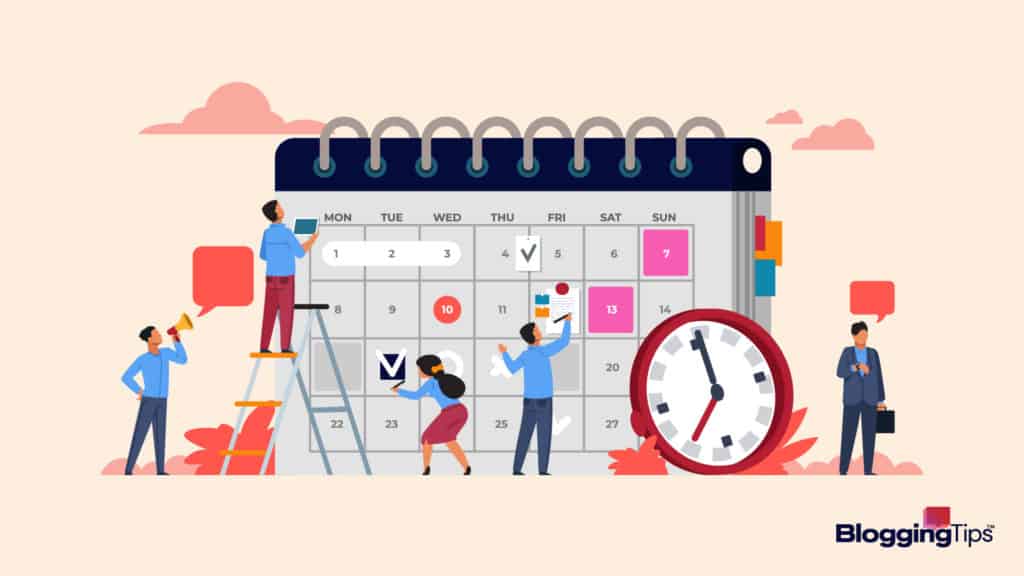
What are Events and Masterminds?
Events and masterminds are summits that take place virtually.
Unlike webinars, these events are engaging and interactive.
In many events and mastermind summits, there are multiple speakers covering a variety of topics, Q&A sessions with thought leaders, and hosted online gatherings.
How Do Events and Masterminds Work?
Usually, virtual events and masterminds are free to attend, but the attendees can only access them for a short period of time.
Then, an organizer can sell an all-access pass that allows the attendees to re-visit event materials whenever they want at their leisure.
An organizer sets up the event and invited vendors/speakers who want to attend.
In some cases, the vendors or sponsors will be required to pay a fee to present their material.
Ideally, the vendors will profit by raising awareness about their own brands.
Types of Events and Masterminds
We talked about Joseph Michael in our section about online courses above.
Michael’s online course took off when he started holding online webinars to promote his course.
Michael’s first webinar made him $25,000 in sales.
And that was just in one afternoon.
A few months later, Michael was making about $40,000 per month in sales just from his webinars.
For the last two years, an event for genealogy enthusiasts and experts called Roots Tech has had to move to be a virtual-only event.
In the past, this conference has taken place physically and sponsors helped pay for the expenses.
Because of the pandemic, the event has taken place virtually since 2020.
These are just two examples of the types of events and masterminds that can be held virtually.
How Much Can You Make With Events and Masterminds?
You can have sponsors at your event or mastermind and earn revenue that way.
However, there is also the opportunity to raise awareness about your blog or your brand.
For this reason, an event or mastermind can be considered a long-term approach.
However, keep in mind Joseph Michael’s webinar, for which he earned more than $25,000.
If you have a large audience, they will pay good money to have this type of access to you.
At your event, you can also sell merchandise that’s related to your brand.
How Easy is it to Create and Promote an Event or Mastermind?
While it helps to have a large following when planning your event, you can be successful even if you’re just starting out.
For example, Jon Schumacher had just 2,000 email subscribers at the time of his launch of Webinar Mastery Summit.
Even with this relatively small audience, Schumacher netted $26,000 in sales after only 10 days.
He also added nearly 3,000 new subscribers to his growing email list.
Additionally, with the recent rise of virtual meetings, there are now a host of inexpensive and easy-to-use virtual conference platforms that make this functionality quick and easy.
Why is Creating an Event or Mastermind a Great Monetization Method?
Anytime you can grow your email subscriber list, you’re going to enjoy a payoff in the long term.
If your event makes you a ton of money, that’s great, but even with a small following, you can grow your audience with good marketing.
12. Accept Donations
One way to increase your revenue from your blog is by accepting donations.
If your blog is for a nonprofit organization, donations are a particularly effective revenue stream.
What are Donations?
Donations are monetary gifts that are commonly given to people in need or artists and creators.
How Do Blog Donations Work?
To accept donations on your blog, you can use a WordPress plugin, including any of these.
- GIVE WP
- Donorbox
- WP Simple Pay
- Formidable Forms
- Seamless Donations
- Woocommerce YITH Donations
- Easy PayPal Donation
- WP Crowdfunding
Donation Platforms
Besides the plugins listed above, you can also use a third-party platform for collecting donations.
Some of the most popular are Patreon, PayPal, Memberful, and Liberapay.
1. Patreon
Patreon has gotten a lot of buzz in recent years and for good reason.
It’s super easy to use and offers a great user experience for both creators and patrons.
2. PayPal
In addition to the Easy PayPal Donations plugin, there is also a sleek PayPal plugin you can use to collect donations.
If you enjoy the simplicity of PayPal, this may be a great solution for collecting donations through your blog.
Additionally, you can simply create a PayPal button for your site using PayPal’s code.
3. Memberful
Memberful is excellent software for publishers, independent creators, podcasters, educators, and more. Memberful also offers a WordPress plugin.
Even better, Memberful has a free starter package, and the pro plan is just $25.
4. Liberapay
For accepting recurring donations, another great tool is Liberapay.
Once donations are set up, the donations are then funded in advance.
This service is free except for what they have to pay for payment processors.
How Much Can You Make With Donations?
Most bloggers aren’t going to become wealthy from donations, but it can provide a little extra cash flow.
On the other hand, there is one well-known blogger who makes about $12,000 per month thanks to his Patreon.
Tim Urban is the creator of the popular Wait But Why blog and all of his revenue comes from his loyal following on Patreon.
Moreover, Urban has just 2,937 subscribers, which isn’t an ungodly amount of followers.
How Easy is it to Accept Donations?
Once you have your plugin installed, it’s simple to accept donations via your blog.
Why is Taking Donations a Great Monetization Method?
While accepting donations isn’t the best way to make money from a blog, it can be a nice supplemental income stream, particularly if you have a devoted following.
13. Start a Podcast
In the post-radio era, it should surprise no one that podcasts are exploding in popularity right now.
If you love podcasts, you should consider starting your own to collect ad revenue and raise awareness about your brand.

What are Podcasts?
A podcast is a digital audio content file that is delivered via the internet with a podcast hosting service.
You can listen to podcasts using an app, online via a web browser, or by downloading them.
How Does a Podcast Work?
Individual recordings or live podcasts are called podcast episodes.
Podcasts are usually hosted by a single individual or multiple individuals.
These people, known as “podcasters,” lead conversations, report news, or share stories.
Podcasts can be self-published and hosted on applications such as Apple Podcasts, Spotify, iTunes, Stitcher, and Google Podcasts.
Types of Podcasts
There are eight primary types of podcasts.
- Interview podcasts
- Conversational podcasts
- Monologue podcasts
- Investigative/storytelling podcasts
- Roundtable podcasts
- Theatrical podcasts
- Repurposed content podcasts
- Hybrid podcasts
How Much Can You Make With Podcasts?
When you first start podcasting, you won’t make a lot of money.
However, there are some big players in the podcasting arena who are raking in the cash.
John Lee Dumas produces the popular Entrepreneurs on Fire podcast, and he makes nearly $2 million per year from his podcast revenue.
How Easy is it to Start and Promote a Podcast?
There is a bit of a learning curve with creating a podcast, but thanks to new technology and apps such as Blubrry, it has become easier than it used to be.
To get started with a podcast, you need some basic equipment.
- Microphone
- Headphone
- Podcast hosting plan
- Audio editing software
- Zoom or Skype account
In addition, it is worth checking out podcast software, which makes recording, editing, and sharing podcast episodes simple and hassle-free.
Why is Starting a Podcast a Great Monetization Method?
The podcast industry is exploding, and a report from Paid Insights revealed that there are more than 700,000 active podcasts and more than 29 million podcast episodes.
If you have an existing blog, you can jump-start your blog by taking your content to the “airwaves” via a podcast.
As we mentioned in our section about Pinch of Yum and the Food Blogger Pro company, their podcast is an excellent complementary tool for their blog and membership site.
With a podcast, you have a few different ways of earning money:
- Raising awareness for your blog
- Promoting your physical products
- Growing your email list
- Creating a following for a membership site
- Direct advertising on your podcast
14. Write an Ebook
If you’ve always felt like you “have a book in you,” why not turn your idea into another revenue stream with your own ebook?
What are Ebooks?
Ebooks are electronic, reflowable, and non-editable books that are presented in formats that allow for reading on ebook readers, smartphones, tablets, computers, or other electronic devices.
How Do Ebooks Work?
There are five primary types of ebook formats.
- EPUB: Can’t be read on Amazon Kindle except for Kindle Fire tablet
- MOBI: Works on Amazon Kindle, but doesn’t support sound or video
- AZW3 and AZW: Amazon Kindle ebooks that support both sound and video
- IBA: Apple iBooks Author app
- PDF: Not reflowable (doesn’t adapt to screen size or user settings), not ideal for e-readers, supports links but not video or sound.
If using your ebook as a giveaway on your blog for growing your email list is your goal, you can turn your manuscript into a PDF for easy downloading.
If you want to publish your ebook for sale, we suggest using the format that’s supported by your publishing tool.
How Much Can You Make With an Ebook?
It’s difficult to calculate how much money you can make with an ebook because it depends largely on your reason for creating an ebook.
If you write your ebook as a giveaway for your email subscribers, your earnings are a part of your long-term passive income strategy.
Likewise, if the goal of your ebook is to establish yourself as an authority in your niche, the value of your ebook will reward you over time.
On the other hand, if you want to publish and sell your ebook, you could see a more immediate return.
If you sell your ebook on your blog via a sales page using a WordPress plugin such as Easy Digital Downloads, you get to keep 100% of the sales.
You can accept payment directly on your blog via Paypal, Amazon Pay, or another payment service.
You can also sell your ebook on platforms such as Podia or Gumroad.
Amazon Royalties
Here are some hard numbers on what you can expect to earn if you publish your book on Amazon with Kindle Direct Publishing (KDP). Amazon offers two ebook royalty rates:
- 70% royalty option (books priced from $2.99 to $9.99)
- 35% royalty option (books priced less than $2.99)
Here are some examples of how those royalties break down.
- An ebook sold for $0.99 cents will earn you royalties of $0.35 cents per sale.
- Books priced at $2.99 will earn you royalties of $2.09 per ebook sale.
- Your ebook priced at $9.99 will earn you royalties of $6.99 per sale.
If you give away your book for “free” on Kindle Unlimited, you earn money based on the number of pages your readers consume.
How Easy is it to Write and Publish an Ebook?
If the idea of writing and publishing an entire book is intimidating, just know that it’s much easier than you think.
You can take a series of blog posts and turn them into an ebook.
Also, working from an outline is extremely helpful when you’re trying to pull a book together.
There is a little bit of a learning curve for publishing an ebook, but mostly it’s just a matter of taking the time to educate yourself on the process.
Steps for Writing and Publishing an Ebook
- Choose your ebook title.
- Conduct research.
- Define your audience.
- Create an outline.
- Start writing.
- Hire an editor on Upwork or Fiverr. Even the best writers benefit from an expert pair of eyeballs on their book.
- Design and format your ebook yourself or use a publishing service.
- Develop your ebook.
- Create a beautiful and effective cover yourself or commission one on a marketplace such as Fiverr.
- If publishing to Amazon, review your ebook in the Kindle Previewer.
- Publish your ebook, whether for sale on a platform or via PDF for a free giveaway on your blog.
- Start promoting your ebook.
- Be active in the community you’re writing for.
Like many things, writing an ebook gets easier the more you do it.
As an example, this article is as long and comprehensive as some ebooks, and it took me a week to research and write it.
Why is Writing an Ebook a Great Monetization Method?
There are three primary reasons for bloggers to write an ebook:
- Earn extra revenue when you publish your ebook. When you translate your knowledge into an ebook, it’s like making money from your quality content twice.
- Give your ebook away to people who opt into your email subscriber list. Growing your email marketing list is one of the most important things you can do to grow your business, and people are more inclined to opt-in when they’re getting something in exchange.
- Establish yourself as an authority in your niche. If readers see you as an expert in your niche, you build trust and authority. This will inevitably drive more traffic to your blog, which stimulates your other revenue streams.
Any of these three reasons will earn you more money and can be a part of your long-term passive income strategy.
Getting Started and FAQ
Before you jump into the monetization methods above, it is important to ask yourself the “why” behind what you’re doing.

Blogging to Blog… or Blogging to Make Money?
So if I asked you today, are you blogging to blog, or blogging to make money, what would be your answer?
In most cases, many people would say they are blogging because they want to make money.
However, most people would also likely say that they aren’t making money with their blog, even if they are writing 2-3 posts per day!
It’s all about the PASSION… I mean PROFITS!
How many times have you heard, follow your passion and the money will follow?
I’m sure you’ve heard it a lot and it’s something everyone in the world of blogging likes to say… especially anyone who has already found success in blogging and making money!
Unfortunately, this usually isn’t the case… probably more like 98% of the time.
One of the main reasons why passion is so important with blogging is because it takes a lot of time and effort and if you don’t care about what you are writing about, then you will quickly lose interest.
It’s much easier to make money with a financial blog and talk about boring topics such as increasing your credit score or how to get a new home loan — but no one really wants to write about that.
The money is in the Call to Action!
Instead, bloggers need to look at their blogs as sales copy and a call to action, while also making them resourceful and informative for the people visiting your site.
People use the internet for three reasons, which one of these fits in with your blog?
- To be entertained
- To buy something
- To find information
Many people fall into the top category of being entertained, and this is one of the hardest areas to monetize.
If you have a blog that helps someone find reviews before buying something, this is a great place to be in for making money.
The last category is all about information, and something that could do very well with Google Adsense and affiliate marketing if done right.
Is your blog worth your time and your visitors’ time?
If you are still struggling to make money with your blog and your content, then it might be a good idea for you to step back for a moment and look at the big picture.
If you were a visitor to your site, would have found any value in reading its content and is it actually providing any value?
Not making money with your blog is one of the biggest turn-offs for long-term success and you really need to have a plan of attack in place.
Blogging takes a lot of time and resources, so the last thing you want is to keep digging yourself in a bigger hole for time and money and not sure where you and your blog might end up a year from now.
Before Starting Your Blog
The biggest difference between the late 90s (the dot-com bubble) and now is that free blogging software like WordPress provides the infrastructure for anyone to create a beautiful, high-traffic website that generates income.
If other amateur bloggers can do it, you too can start a blog and make money online.
After all, I started with no formal computer science degree.
I used to work in finance until I realized the power of the internet and how much I loved building websites.
My goal for bloggingtips.com is to teach anyone how to blog, which as the domain states, can be as simple as 1-2-3.
Making money blogging online doesn’t have to be the most difficult thing you’ve ever accomplished.
What To Blog About
Everyone has an interest or passion they are knowledgeable about.
The best topic to blog about is the one that ignites your passion, not the one that seems commercially viable, although that is critical too.
While it is important to provide readers with valuable information, readers can tell when a blogger truly cares about a subject.
This creates a sense of trust with your audience, which will keep them coming back for more.
One of the lessons I’ve learned is to always offer your readers more than you ask for in return.
If you present the best user experience, information, and insights, why should readers stop visiting your blog?
You’ll have earned their “customer” loyalty and if your readers are existing bloggers, they will refer their own audience to check out your site.
The Riches Are In The Niches
There are blogs about business, technology, news, personal finance, trading/investing, mobile apps, social media, career advice, education, traditional and online marketing, gaming, politics, religion, art and crafts, fashion, food, music, mommy blogs, home decor or interior design, dating and relationships, and any subject you can imagine.
Within each category or market are a number of niches.
If this is your first foray into blogging, I highly suggest you start with a very low competition, niche site.
If you are unfamiliar with “niche sites”, they are blog websites focused on very specific subjects, audiences, or demographics.
For example, within the health industry, you could concentrate on “How To Get 6-Pack Abs”, “Weight Loss Product Reviews”, or “How To Make Your Hair Grow Longer” because competing with WebMD or MayoClinic on everything health and medical-related is nearly impossible as a solo blogger.
Remember, ranking on the 1st page of Google for a keyword that gets 5,000 searches per month is significantly better than ranking at the bottom of the 2nd page for a term that gets 500,000 searches per month.
Let’s be honest, not many people visit the 2nd page and you will not make money online with poor rankings and no traffic.
Wrapping Up: How to Monetize a Blog
Is there a best way to monetize a blog?
The clear winner is the monetization method that brings you in the most money.
If you’re putting ads on your blog, we recommend that you try to get your traffic up so that you can apply for Adthrive.
For raising awareness and fostering long-term growth and revenue for your successful blog, try to invest some time into growing your email list or producing a podcast.
Our best advice for how to monetize a blog is to not just stick with one easy method.
While you’ll likely be starting out with Google Adsense and as an Amazon Associate, budget some time for growth and special project so that you can continue to grow and thrive.




